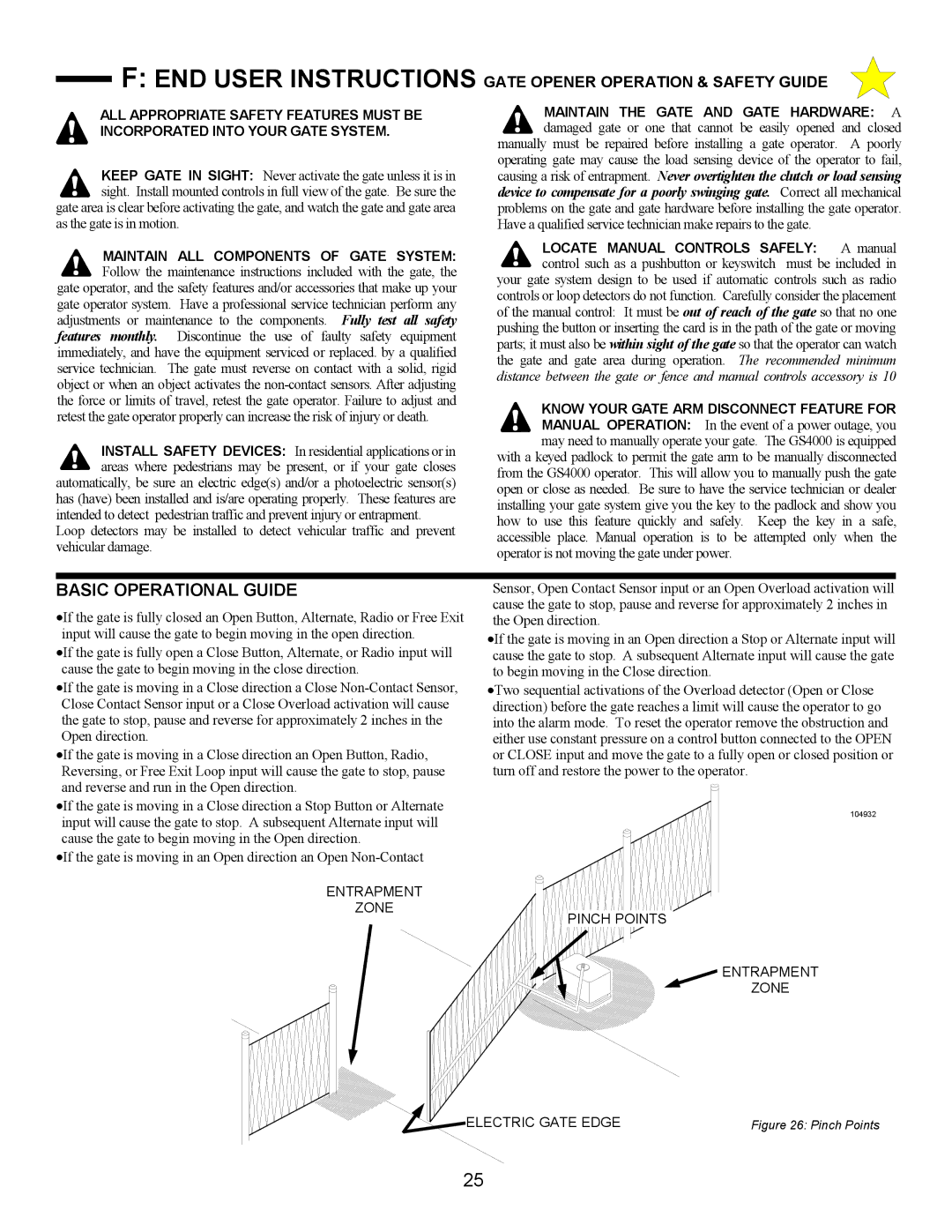ANSI/UL 325 specifications
Allstar Products Group is a prominent manufacturer in the realm of access control and safety products, and its commitment to quality is evidenced by its compliance with ANSI/UL 325 standards. These standards are essential for ensuring the safety and reliability of automatic gates and their related components, focusing on minimizing risks associated with entrapment and injury.One of the key features of Allstar's ANSI/UL 325 compliant products is their advanced safety mechanisms. These include integrated sensing technology that detects the presence of objects or obstacles in the path of the gate, effectively preventing accidents. This safety technology often encompasses features such as photo eyes and edge sensors that can immediately halt or reverse the movement of a gate if an obstruction is detected.
Additionally, Allstar’s product range is notable for its robust design and durability. Built to withstand various environmental conditions, these products use high-quality materials that ensure longevity and reliability, meeting the stringent demands of both residential and commercial applications. The designs are also forward-thinking, incorporating user-friendly features that allow for easy installation and maintenance.
Another characteristic that sets Allstar apart is their integration of advanced technologies. Many of their products support smart technology, enabling users to control their gates through mobile applications or remote access systems. This integration allows for convenience and enhanced security, providing real-time alerts and status updates.
Allstar Products Group also emphasizes compliance to facilitate peace of mind for users. All their ANSI/UL 325 certified products undergo rigorous testing procedures to ensure they meet the stringent safety and performance requirements set forth by the American National Standards Institute and Underwriters Laboratories. This adherence to such standards not only assures consumers of reliability but also aligns with the industry’s best practices.
In conclusion, Allstar Products Group’s ANSI/UL 325 compliant products exemplify cutting-edge safety features, robust construction, and advanced technology integration. Their commitment to quality and safety ensures that customers can enjoy the benefits of automatic gate systems with confidence, knowing that they adhere to the highest safety standards in the industry.

